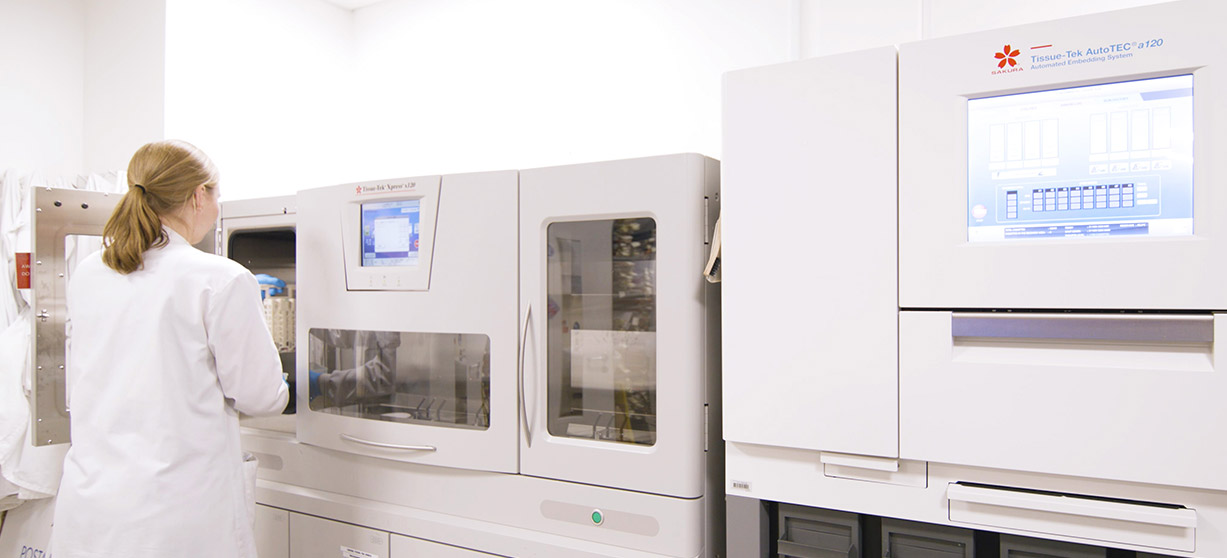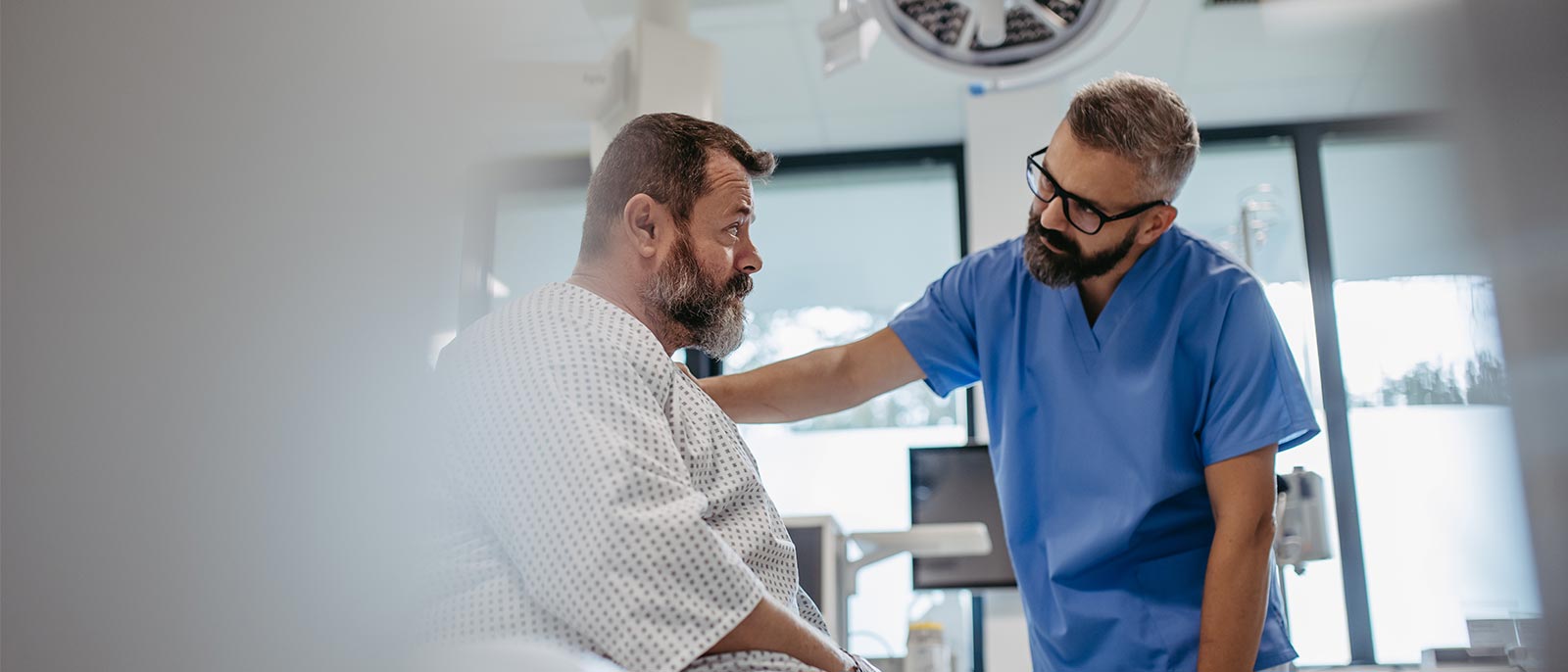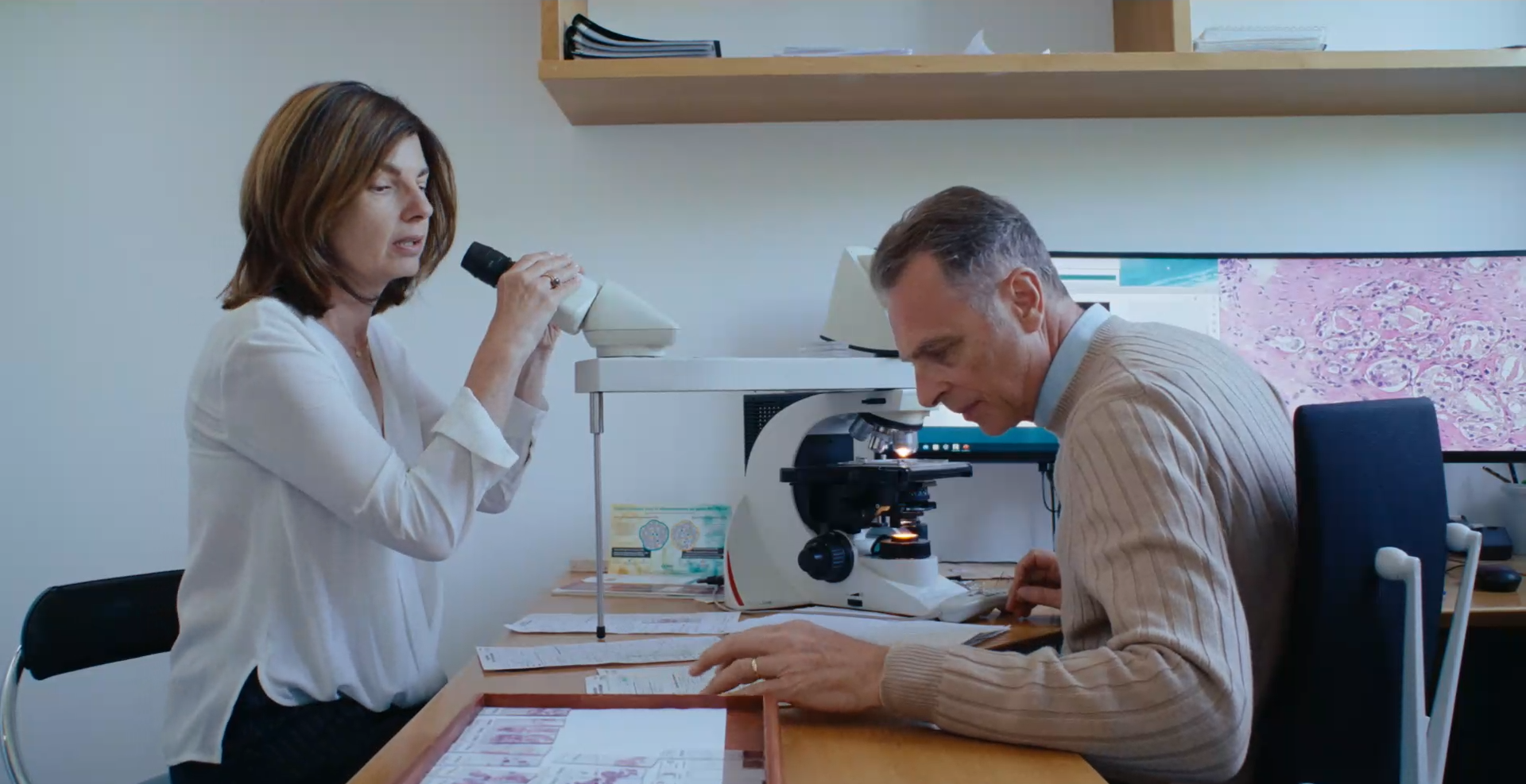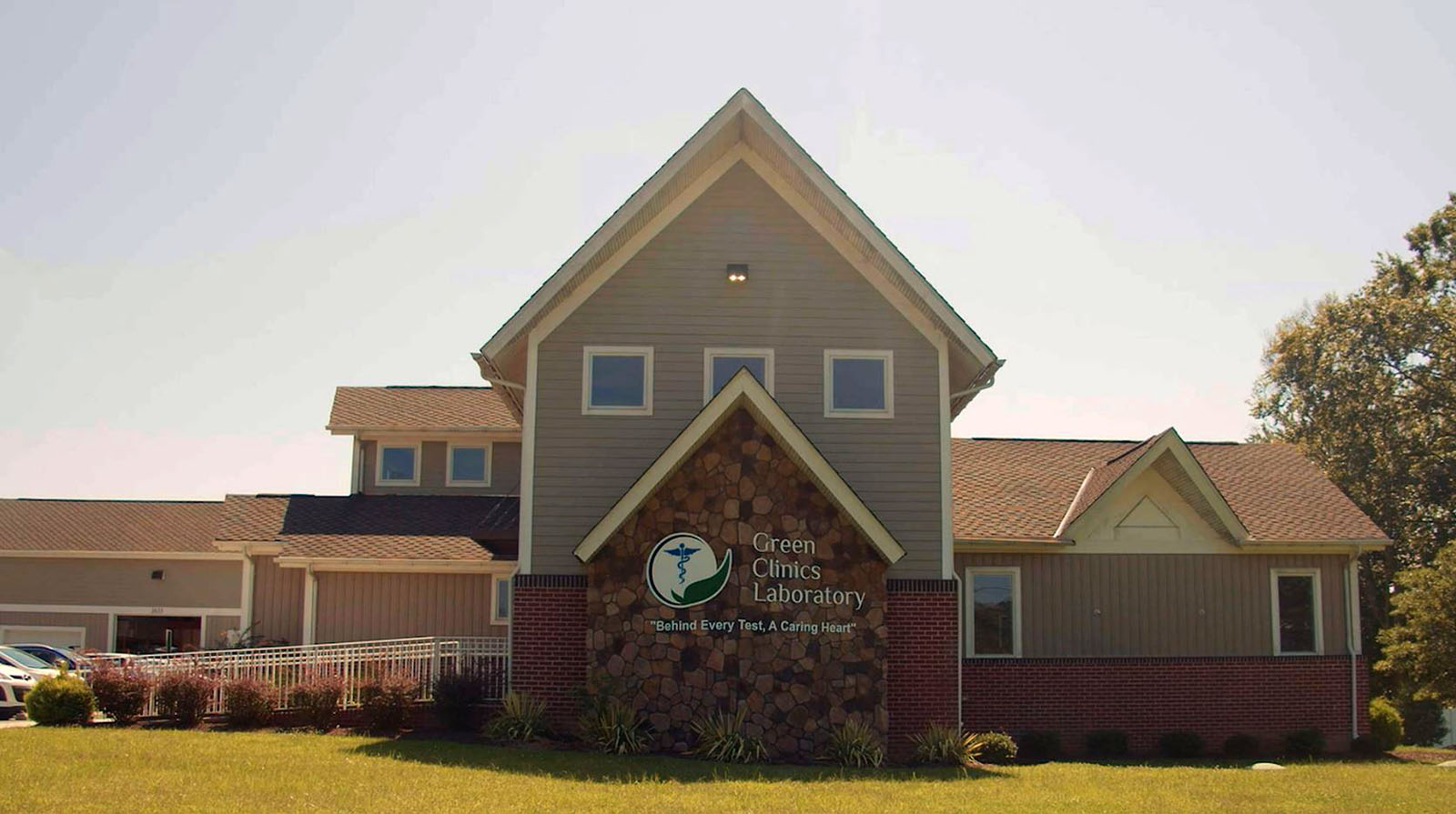The implementation of the Tissue-Tek AutoTEC® a120
The county hospital in Gävle offers both emergency care and high-quality planned healthcare around the clock, all year round. The hospital is located north of Stockholm, in the Gävleborg region.
The Clinical Department of Pathology receives 60,100 tissue samples and over 21,500 cell samples for diagnosis per year. The department covers the regions of Hälsingland and Gästrikland for health centers, private and public practitioners. The unit is also responsible for administering and diagnosing routine gynaecological tests in the Gävleborg region, as well as autopsies and mortuary operations.
The staff at the Department of Clinical Pathology consists of 15 biomedical scientists, 4 laboratory support employees, 4 secretaries, 6 pathologists and 2 consultant pathologists.
The Head of Department, Laboratory Manager Iréne Silverlo, explains why the department chose to switch from manual to automated embedding by investing in a Tissue- Tek AutoTEC® a120.
“Our goal was to improve the overall sample flow through the laboratory. In the past, we manually embedded tissue, moving our production in large batches and operating several similar workstations simultaneously, which is very inefficient. Through the introduction of the Tissue-Tek AutoTEC a120, we were able to get a continuous flow and move our biomedical scientists (BMA) into the microtomy area, where their skills are so much better used. Manual embedding is a repetitive work step for the BMA, where small repeated movements are performed continuously with a risk of developing Repetitive Motion Disorders (RMD).
I believe that we as managers have a duty of care to our employees and a responsibility to avoid RMD, by securing the right working conditions for all our employees” says Iréne Silverlo.
How did the implementation process proceed?
Annica Liljeroth, super user of the Tissue-Tek AutoTEC a120, explains: “The biomedical scientists working in our laboratory are very innovative, inquisitive and eager to learn new ways of working – the old saying: “If you always do what you’ve always done, you’ll always get what you’ve always got” - just doesn´t exist here. If you want to change, you have to think differently and challenge yourself.”
What was the first step?
“We established a project team, where a chief physician, a resident physician, a biomedical scientist and I were present together with the Implementation Specialist from Sakura Finetek. Vision and goals were set with deadlines for a clear overview and it also gave us the opportunity to celebrate ‘wins’ as each milestone was passed throughout the process.”
The kick-off
“The implementation specialist from Sakura Finetek held a presentation on ‘Change Management’, where we learned what change can do to you individually as well as in a group and what kind of reactions are normal (human) and how do we help each other on the way moving forward. A lot of tips and tricks were shared and we developed a “we-feeling” about the whole project, it belonged to us collectively and the responsibility to achieve success was ours, it was a very positive feeling. A pre-visit was arranged by the Service Team from Sakura Finetek to make sure the installation would go as smoothly as possible. They met with the medical technology team and the IT-department ensuring that the Laboratory Information System (LIS) integration would work from day one.”
The Paraform workshop
The automated embedder Tissue-Tek AutoTEC a120 requires the use of the Tissue-Tek® Paraform® sectionable cassette system. This system allows tissue to be orientated within specially designed cassette inserts. These inserts are made from a sectionable material (Paraform) and are available in different types, which can accommodate a variety of tissue sizes, from large sections to small biopsies and skin pieces. The tissue keeps the orientation and remains stable within the cassette insert throughout processing and paraffin wax is automatically inserted around the tissue.
Annica Liljeroth continues, “A Paraform workshop was subsequently arranged, where all staff members received detailed information, which was greatly appreciated. Sakura Finetek gave an introduction to the company, the Tissue-Tek AutoTEC a120 and change management in practice. They showed how the instrument works, which cassettes and frames are available, placement and orientation of tissue in paraform cassettes and optimal size of preparation. This was an important kick-off for us which created a really positive feeling.
For the following two weeks, the Paraform system was used manually, so everybody could get familiar with the frames and inserts. One really important lesson learned was: look at the inserts and decide beforehand which one to use, so you can adjust the grossing accordingly. The first run was performed by our superusers, where already known material (skin, gall bladder, appendix and uterus) was used and the process worked well with good results, as expected. Then we started fulfilling our goals.”
- The first run took place on the 25th of September 2017.
- The entire grossing team used the Paraform System for two weeks manually prior to the automated embedding. The reason behind is to secure the orientation of the tissue, correct lid closure and also to be familiar with trimming the block afterwards, as one has to remove the net from the bottom of the insert, prior to obtaining a section.
- On the 25th of September 2017, two BMAs from the grossing team started the embedding of all overnight processed tissue in Paraform.
- On the 16th of October 2017, six BMAs started using Paraform for skin samples and small biopsies.
- December 2017, the first two resident physicians started to embed using the Paraform system mainly for large resections.
- December 2017, 90% of all skin samples, all small biopsies as well as overnight processed tissue are automatically embedded. The only exception is small skin punches and needle biopsies.
- Pathologists start using the Paraform system in February 2018 on breasts and kidneys.
- All tissues, except small skin punches and needle biopsies, are embedded in the Paraform cassette system by March 2018.
By March 2018 we had achieved the milestones as shown below:
“We were ahead of time, which created a very positive atmosphere and the attitude, ‘yes - we can do it’, made us work even harder. By the end of December 2017, all goals from a BMA point of view, were reached and then it was the turn of the pathologists.”
Grossing at the pathology department
The Laboratory Manager, Iréne Silverlo explains. ”Due to the lack of pathologists in Sweden, which has been the case for nearly a decade, the biomedical scientists started grossing back in 2014. At that time, the pathologists were used to having a BMA as an assistant, while they were grossing well, but since the BMA´s could handle grossing by themselves: so could the pathologists, were my thoughts. So I simply removed the assistant and the pathologists were fine.”
Irene Silverlo continued: “This time our BMA´s were trained to use the Paraform Cassette System and they handled it with great success, so I had the same thoughts again, if my biomedical scientists can do it, then why shouldn´t the pathologists? I removed all the uni-cassettes from the grossing area.”
“Training, support and troubleshooting were provided as required for the pathologists to ensure that they all felt comfortable and confident with the process - but going back to manual embedding was never an option,” Irene Silverlo reflects.
Status as of the 1st of March. Annica Liljeroth explains what the introduction of Tissue-Tec AutoTEC a120 has meant for the department.
“We have reduced the load on manual embedding and today it is only 1 BMA that embeds instead of 4. Currently, 80-85% of our production is embedded in Tissue-Tek AutoTEC a120, which has resulted in an improved sample flow through the laboratory and consequently faster response time. The proportion of automatically embedded material will increase further after our experiences with the gels, which aid in orientation for especially small biopsies. We are still continuing our optimisation, so we can get as much on the Tissue-Tek AutoTEC a120 as possible.”
Sakura Finetek’s implementation process
After receipt of a purchase order we provide the following support to ensure effective and smooth implementation in to the daily routine. This is achieved by close collaboration between you as a valued customer and Sakura´s team of implementation- and application specialists:
- Expectation reconciliation to the implementation process
- Paraform workshop
- User training
- Regular project meetings
- Ongoing support from our application specialists
- Continued follow-up throughout the implementation period
- Project handover






